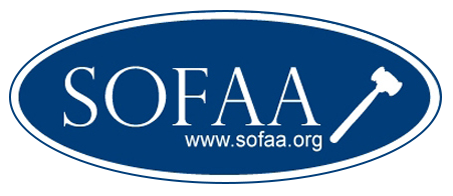Group Captain Peter Reginald Casement was born in County Antrim in 1921 into a family with a history of military service and achievement. He was educated at Marlborough College. His flying career began in 1939 when he learnt to fly Tiger Moths in Coventry; he undertook his first solo flight after just 11 hours and 30 minutes of training. He joined No 61 Squadron in 1941 to fly a Hampden; by the end of the war he had flown most of the aircraft used by the RAF at the time and was one of the few pilots to have seen service throughout WW2 – only 30 percent of aircrew who flew with Bomber Command survived.
Peter took part in many strategically important missions during the war. On May 30 1942, flying with 61 Squadron, he piloted one of 73 Lancaster Bombers engaged in the first of Bomber Command’s ‘thousand bomber raids’ on Germany. Among his notes for that day he records ‘An inauspicious start as Cook did not feel fit enough to fly – even in the Front Turret, so we went without a Front Gunner. Immediately after take off we had a very close shave, passing about 6 feet below another Lancaster going in the opposite direction’.
Later that year, during the Battle of the Atlantic he assisted in the destruction of a U-Boat. The bomber he piloted as Acting Flight-Lieutenant was the first to bring back photographic evidence of the sinking of a U-boat. The British national press celebrated his achievement, printing the four photographs together with minute-by-minute accounts from the Air Ministry News Service. These historic photographs plus his hand written descriptions are in an album included in the lot.
He was awarded the Distinguished Flying Cross in October 1941, with the Bar in August 1942; the Distinguished Service Order followed in December 1942. The citation for his 1942 DSO states: ‘Flight Lieutenant Casement is an outstanding captain and pilot. He has completed numerous operational missions, during which he has attacked highly important industrial targets in Germany; he has also completed several patrols over the Atlantic and assisted in the destruction of a U-boat’. His Air Force Cross, an award granted for ‘an act or acts of exemplary gallantry while flying, though not in active operations against the enemy’ is listed in the King’s Birthday Honours 1951.
During his active service, not only did Peter update his log books as required but he also wrote detailed accounts of many of his sorties. Auctioneer, Duncan Chilcott explained:
“While his log books document the RAF’s nightly missions, Peter’s notebooks shed light on the airmen’s night-time battles with the cold, poor visibility, navigation problems, sickness, enemy search lights and flak.
“The combination of medals is rare in itself, but it’s the fact that they were awarded to a pilot with such an extraordinary WW2 service and are being offered with an extensive archive of materials to accompany them that gives this such historical significance.”
Other than the log books, notebooks and photographs, Peter kept many fascinating items from his time in the RAF. These include his flying jacket, gloves and boots, several sets of uniform, a caricature of himself drawn by Pat Rooney in 1949 and RAF training manuals. All the photographs were taken from the planes he flew, giving a pilot’s-eye view of other planes as well as some of the many locations his squadron flew over.
“Thankfully Peter’s family realised the importance of the whole collection and have kept it together. We hope that the auction finds a buyer who will do the same,” Duncan added.
After the war Peter was posted to Amman in the Middle East, returning to the UK in 1948 to continue his RAF career in St Eval, Cornwall and at Joint Service Defence College Latimer, Buckinghamshire. Appointed to the rank of Wing Commander, the youngest in the RAF at the time, he served in Cyprus during the Suez Crisis. His later career included stints at RAF Binbrook, working back home in Northern Ireland where he was attached to HMS Sea Eagle, working with Nato Submarines and RAF Mountbatten in Plymouth. Peter ended his career as Station Commander of RAF Topcliffe in Yorkshire in 1966.
The final sentence of his 1942 DSO citation comments: ‘Throughout his operational career, this officer has displayed great efficiency and devotion to duty which have proved a source of encouragement to his fellow captains’. When Peter retired in 1968, he had flown 3,800 hours in 27 different aircraft.
His family said, “he was a self-effacing and modest man, held in high esteem by his crew because he never lorded over them or raised his voice to them. He regarded himself as being very lucky, not only because he was able to fly aeroplanes, which he loved doing, but because he survived the war.”
After his distinguished career in the RAF he moved to South Devon in the mid-1970s where he and his wife set up a holiday cottage business; he lived in South Devon until his death in 2016.
The group of medals, including the miniatures, plus the complete archive and uniforms is being sold as one lot by the family; it will be offered with an auction estimate of £10,000 to £15,000*.
Post-script: The medals and collection sold for £21,000 plus Buyers Premium, June 2019.



